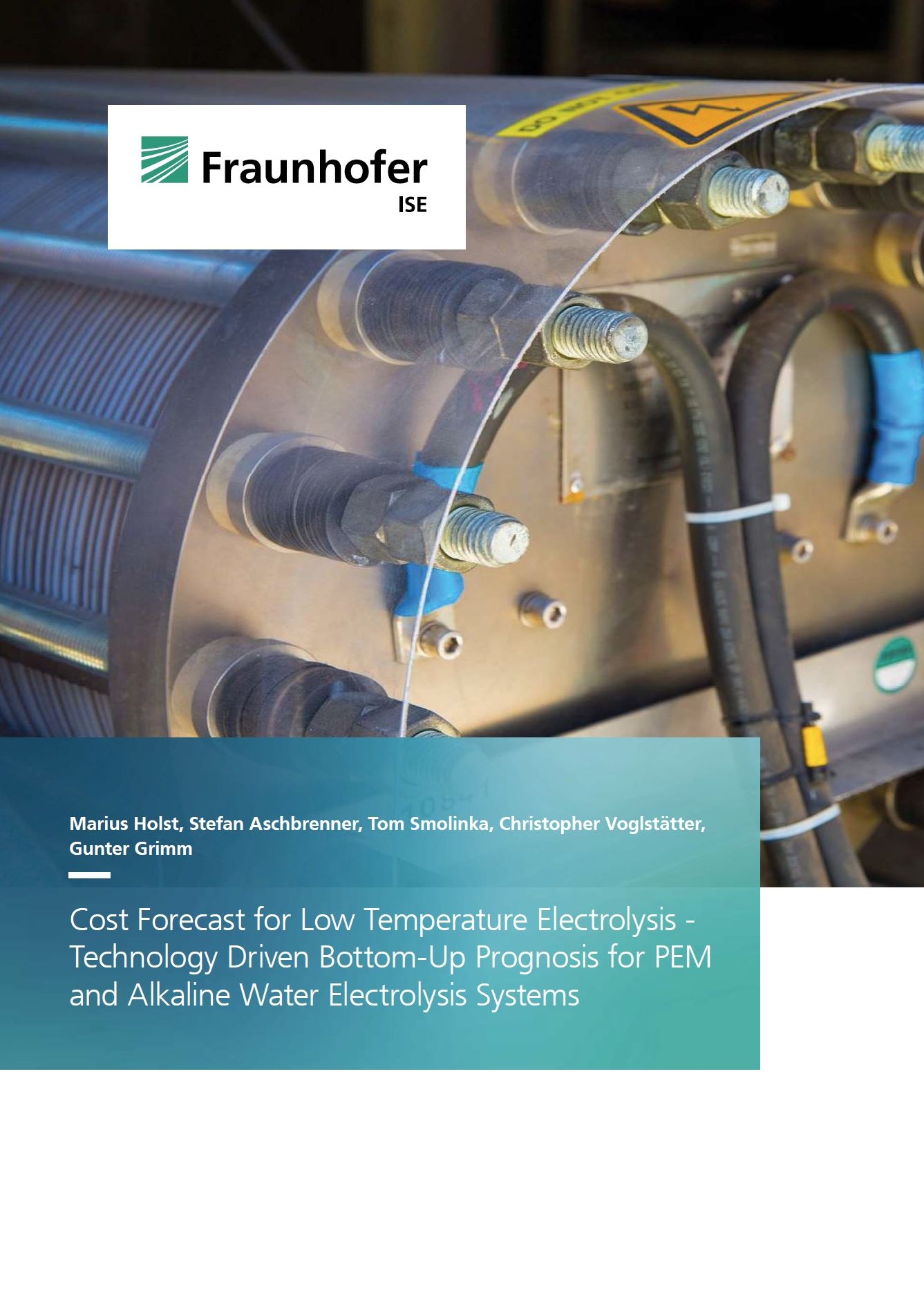Cost Forecast for Low Temperature Electrolysis
Study
Green hydrogen as a sustainable energy carrier
The production of green hydrogen through water electrolysis has attracted enormous interest in recent years. Considerable efforts are being made in the electrolysis industry to increase the size of cells and stacks and to significantly expand production capacities. At the same time, the current discussion about the costs of electrolysis facilities encompasses a wide range of price forecasts characterized by contradictory statements, making it difficult to reliably evaluate electrolyzers. In order to create the necessary transparency in this discussion about the investment costs for water electrolysis, the Fraunhofer Institute for Solar Energy Systems ISE has created a bottom-up cost model and carried out a cost study for the US NGO Clean Air Task Force (CATF) based in Boston, MA. In doing so, we are contributing to a broader understanding of the cost structures of low-temperature water electrolysis systems.
The study design
A basic cost model for alkaline (AEL) and PEM water electrolysis was developed for the commissioned study, making it possible to evaluate the dependencies of the cost components of the individual technologies in detail and to derive individual cost reduction potentials for these electrolysis technologies. Two plant sizes, of 5 MW and 100 MW, were considered for both AEL and PEM water electrolysis in order to cover the demand for both decentralized and centralized applications. In addition, a technology forecast for both technologies is included in the models in order to compare the cost structures for currently available components and materials (2020) with the expected developments of the “next generation” of AEL and PEM electrolysis systems (2030). The cost models are based on a bottom-up approach by Fraunhofer ISE, in which typical layouts of the electrolysis systems are first designed and then technical parameters are determined by a stationary simulation of the energy and mass balances in the systems. Based on these specifications, the cost shares of the individual subsystems and components are determined using price quotations from manufacturers and suppliers as well as specific cost functions. Additional costs — such as engineering, etc. — are taken into account by means of a surcharge calculation. A separate model is used for the various stacks, which is also based on a quantification of the components and specific cost functions.
The results:
- In all of the cases analyzed, the results show that the cell stack is the most expensive component in an electrolysis system.
- Alkaline stacks have a cost advantage over PEM stacks, and this will continue to be the case in the future.
- However, due to technological progress and an increase in the active cell area, the specific stack costs for both types of electrolysis stacks will be practically halved within 10 years, from around 200 EUR/kWDC to less than 90 EUR/kWDC for AEL stacks and from 380 EUR/kWDC to approx. 220 EUR/KWDC for PEM stacks.
- Nevertheless, the system costs are not dominated by stack costs alone. Rather, they are made up of numerous separate components, such as gas and water treatment, cooling systems and power electronics.
- In particular, the costs of the power electronics (rectifier and transformer), as the second most expensive component, account for a similar share of the system costs as the stacks.
- The cost analysis further shows that alkaline systems will also lead to lower system costs in the future. However, the costs almost equalize if the expenses for downstream compression are taken into account.
- Overall, system costs of approx. 400 to 500 EUR/kW can be expected in 2030, with decentralized smaller systems remaining significantly more expensive.
The Clean Air Task Force (CATF) is a non-profit organization that actively works to protect against the negative effects of climate change by promoting the rapid development and deployment of low-carbon energy and other climate-protecting technologies worldwide.
Authors:
- Marius Holst
- Stefan Aschbrenner
- Tom Smolinka
- Christopher Voglstätter
- Gunter Grimm
Year:
2021
On behalf of:
Clean Air Task Force
